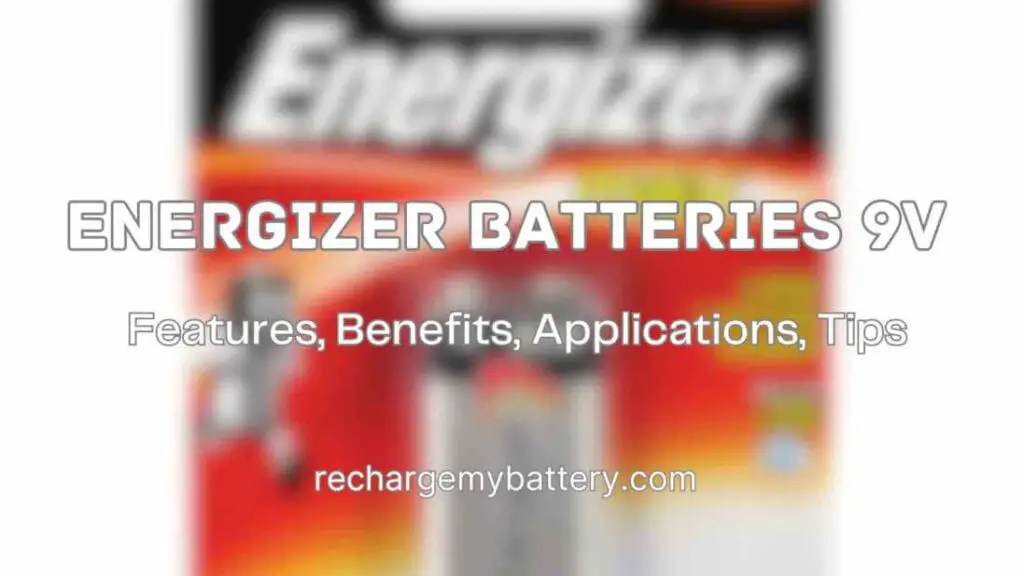Introduction
In today’s fast-paced world, rechargeable batteries have become a ubiquitous part of our lives. They power our devices, making them essential for both work and leisure. However, one common issue that users face is self-discharge. This phenomenon occurs when a battery loses charge over time, even when not in use. In this guide, we’ll delve into the intricacies of managing self-discharge in Energizer rechargeable batteries. With the right techniques, you can maximize their lifespan and keep your devices running smoothly.
Understanding Self-Discharge
What is Self-Discharge?
Self-discharge is the natural process by which a battery gradually loses its charge when not in use. This can be attributed to internal chemical reactions within the battery.
The Impact on Battery Life
Excessive self-discharge can significantly reduce the overall lifespan of a rechargeable battery. Understanding how to mitigate this process is crucial for getting the most out of your Energizer batteries.
Factors Affecting Self-Discharge
Temperature Control
Managing the temperature of your battery storage is paramount. Energizer rechargeable batteries perform optimally at room temperature. Avoid exposing them to extreme heat or cold.
Voltage and Capacity
Matching batteries with the correct voltage and capacity requirements of your device can help reduce self-discharge. It ensures that the battery isn’t overtaxed during usage.
Proper Storage Techniques
Storing batteries in a cool, dry place, away from direct sunlight, can significantly slow down self-discharge. Additionally, consider investing in battery cases or organizers to prevent short circuits.
Techniques for Managing Self-Discharge
Regular Use and Rotation
Regularly using and rotating your Energizer rechargeable batteries can prevent them from sitting idle for extended periods, which can lead to increased self-discharge.
Utilize Advanced Chargers
Investing in smart chargers that automatically adjust charging rates can help optimize the charging process, reducing self-discharge over time.
Employ Low Self-Discharge Batteries
Energizer offers low self-discharge rechargeable batteries, specifically designed to retain their charge for longer periods of time. Consider switching to these for critical devices.
Avoid Overcharging
Overcharging can lead to increased self-discharge rates. Always use chargers with overcharge protection features.
Extending Battery Life with Proper Charging Habits
Charging habits play a significant role in managing self-discharge in Energizer rechargeable batteries. It’s crucial to follow some best practices to extend their lifespan. One key tip is to avoid partial charging. Instead, aim for full charge cycles whenever possible. This means allowing the battery to completely deplete before recharging it. Additionally, avoid leaving batteries in the charger for extended periods after they’ve reached full capacity. This overcharging can lead to increased self-discharge rates over time.
The Benefits of Low Self-Discharge Batteries
Energizer offers a range of low self-discharge rechargeable batteries, which are engineered to retain their charge for longer durations. These batteries are particularly useful for devices that aren’t used frequently. Unlike standard rechargeable batteries, low self-discharge variants can hold their charge for months, making them ideal for emergency devices like flashlights and smoke detectors. By investing in these specialized batteries, you can have confidence that they’ll be ready for use when you need them most.
Environmental Considerations: The Eco-Friendly Choice
Opting for rechargeable batteries, like those offered by Energizer, is not only cost-effective but also environmentally responsible. Traditional disposable batteries contribute to landfills and can release harmful chemicals into the environment. In contrast, rechargeable batteries can be used hundreds of times before they need to be replaced, significantly reducing waste. By managing self-discharge effectively, you can further maximize the eco-friendly benefits of using rechargeable batteries. This small change can have a positive impact on the planet in the long run.
Conclusion
Managing self-discharge in Energizer rechargeable batteries is essential for prolonging their lifespan and ensuring reliable performance. By getting to know about the factors that contribute to self-discharge and implementing effective techniques, you can make the most of your rechargeable batteries. Remember, proper storage, rotation, and using advanced chargers are key to keeping your devices powered up when you need them most.
